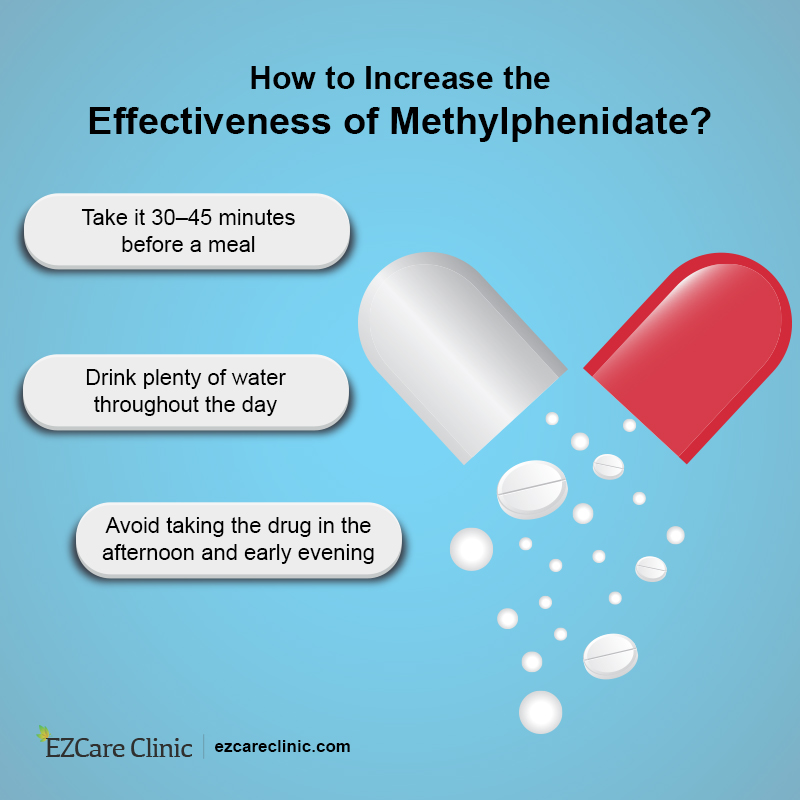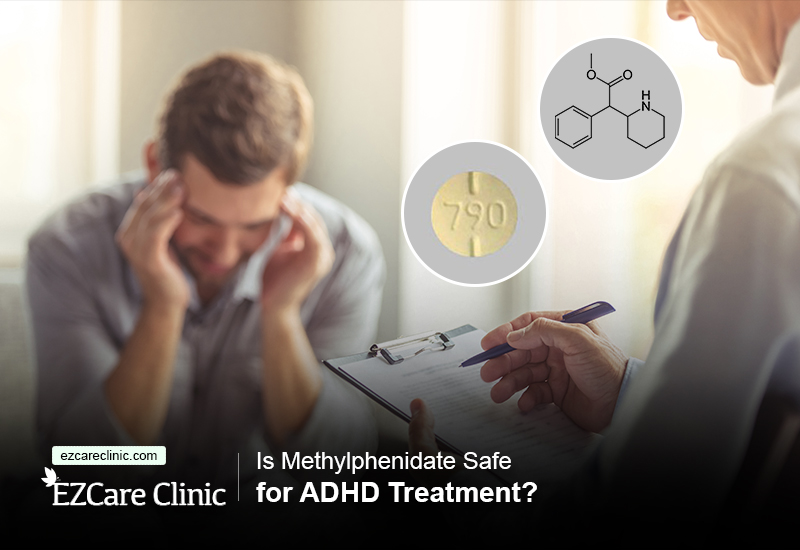Methylphenidates are a type of medication that is sold under various names such as Ritalin, Daytrana, or Concerta. It is a central nervous system stimulant that affects certain chemicals in the brain and nerves that contribute to hyperactivity and impulse control. Methylphenidate is used to treat attention deficit disorder (ADD), Attention deficit hyperactivity disorder (ADHD), and narcolepsy.
Treat your ADHD through the most effective medication- Click the button below.
History of Methylphenidate
Methylphenidate was made in 1944 and finally approved by the FDA for medical use in 1955. As one of the oldest ADD and ADHD medications still in use today, methylphenidate is considered to be the gold standard, the first line of treatment by many physicians.
What Is ADHD?
Attention Deficit Hyperactivity Disorder affects between 4-7 million children and 9-13 million adults in the United States. Although it is still a widely misunderstood condition, the amount of money that is spent on treatment, research, and education per year is estimated to be in the millions. With all that money for research, we now know more than ever about this condition.
ADHD is a brain disorder marked by an ongoing pattern of inattention, hyperactivity, and impulsivity that interferes with functioning or development. Characteristics include:
- Easily distracted and missing details
- Get bored quickly
- Trouble focusing on a single task
- Difficulty organizing thoughts and learning new information
- Daydreaming
- Process information slowly and less accurately than others
- Difficulty following directions
- Lack of patience
- Interrupting others or not able to take turns

Ways to Increase Effectivity of Methylphenidate
Unfortunately, scientists still do not know what causes ADHD, but they theorize that there may be several things that could contribute to its development, including brain injury, environmental exposure to toxins, alcohol and tobacco use during pregnancy, premature delivery, and low birth weight. Despite popular misconceptions, ADHD cannot be cured; rather, through a series of therapy and medications, the symptoms can be managed.
ADHD Diagnosis
Unfortunately, diagnosing ADHD isn’t simple in either children or adults. Most children have symptoms before age 7. However, despite the disorder always being present, some adults are not diagnosed until much later in life, typically after high school and college. For these patients, they were able to mask the symptoms during their youth due to their high level of functioning. Later, when work or their home life has become more complicated than ever, symptoms arise.
Get yourself the best ADHD diagnosis and treatment from our experts- Click the button below.
ADHD can also share symptoms with other disorders such as depression, anxiety, and certain sleep issues. Before making a diagnosis, most doctors will conduct testing to rule out different ailments. According to the American Psychiatric Association, a person must show at least six of the nine major symptoms of inattention and hyperactive-impulsive behavior and that the behaviors must be present and disruptive to everyday life for at least six months to be diagnosed.
ADHD Treatment
Treatment for ADHD is typically a combination of behavioral therapy and medications. In adults, doctors may recommend therapy before starting any medicines, depending on how severe it is and the ways it affects everyday living. Occasionally, patients can learn
Medications typically are one of two types, stimulants or non-stimulants. While both can be effective, stimulant medications are usually the first choice because they are fast-acting. Approximately 70% to 80% of patients who are treated with stimulant medications have fewer symptoms while taking them. Methylphenidates is a stimulant medication.
Occasionally, patients can not use stimulants either because of other health issues or because they do not like the way they make them feel. These individuals are then prescribed non-stimulants. Unfortunately, these do not work as quickly to relieve symptoms, but they can last up to 24 hours.

Methylphenidate Brands
Methylphenidate Side Effects
As with any medication, methylphenidate use can cause side effects. While this is not a complete list, some of the more common ones seen are:
- Mood changes, feeling nervous or irritable
- Insomnia
- Fast heart rate, increase blood pressure
- Loss of appetite, weight loss
- Nausea
- Stomach pain
- Headache
How to treat your ADHD naturally?– Click the button below to get our professional doctors’ advice.
Conclusion
ADHD can be a difficult diagnosis for anyone, especially adults who may not have been diagnosed during adolescence. Thankfully several medications can help alleviate the symptoms it causes. Methylphenidate has been a staple of ADHD treatment since the 1950s. It is safe and effective and often the first choice in treatment.
For patients who wish to seek treatment in the San Francisco area, EZCare Clinic is open seven days a week from 11 am to 7 pm. The knowledgeable practitioners will review your medical history and rule out any other ailments that could be causing similar symptoms.
If appropriate, EZCare can prescribe methylphenidate as part of your treatment regimen. On staff, there are also clinicians who can offer counseling and coping techniques to aid in your recovery. Don’t let the symptoms of ADHD overwhelm you, book your appointment today.





